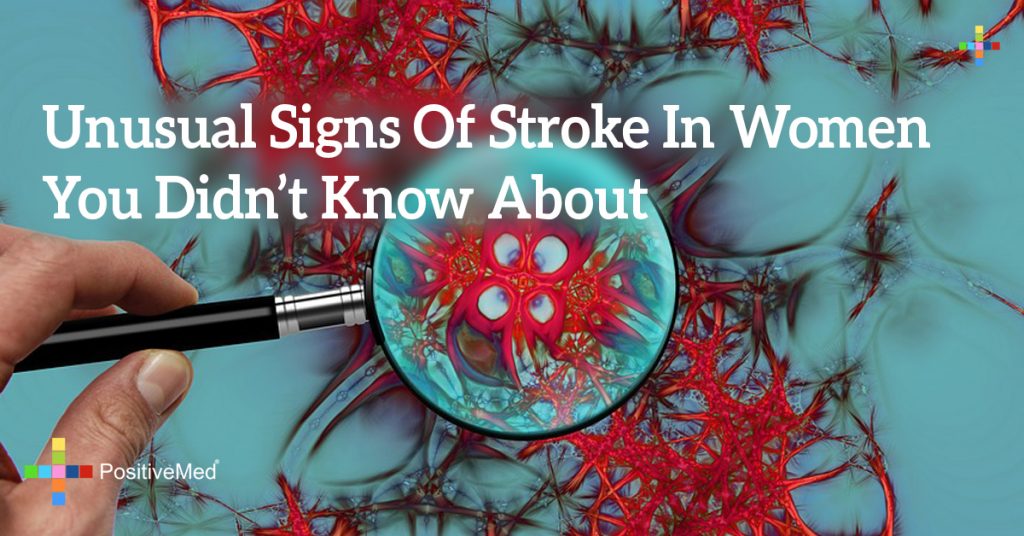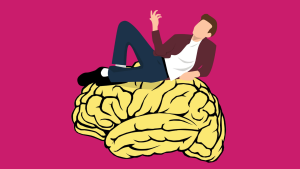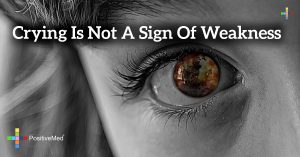
Both men and women can suffer from a stroke. When one does occur, the results can range from having almost no symptoms of causing a fatality. Women may have some unusual symptoms caused by a stroke, and women may not recognize them as being caused by it.
A Transient Ischemic Attack – A Warning
One type of event that often looks like a stroke at first is called a transient ischemic attack (TIA). A TIA is similar to a stroke in that it involves a stoppage of the blood flow in the brain, but only for a short time. The symptoms will be like that of a stroke, but they will only last for less than 24 hours, and the National Institutes of Health site says that they usually last only one or two hours.
While a TIA is not going to cause any lasting problems, they are a warning that a stroke is about to occur. Two things that people with a TIA need to be aware of is that Stroke.org indicates that as many as 40 percents of people with a TIA will actually have a stroke and that almost half of all strokes occur within just a couple of days after having a TIA.
RELATED ARTICLE: THIS May Save Your Life: The Difference Between A Heart Attack, Stroke, And Cardiac Arrest
Symptoms of Stroke or TIA
Because both a stroke and a TIA are caused by the blockage of the flow of blood in the brain, the symptoms are going to be the same. The difference is that, in a TIA, the symptoms are not going to last long. The symptoms that will occur suddenly are:
• Changes in vision
• Trouble speaking
• Confusion
• Trouble understanding even simple statements
• Problems with balance or walking
• Numbness or weakness
• Inability to move limbs or facial muscles – especially on one side
When women have a stroke, there may be some different kinds of symptoms. Instead of some of the above symptoms, WomensHealth.gov reports that they may experience:
• Shortness of breath
• Pressure in the chest, or pain
• Rapid or irregular heartbeat
• Sudden hiccups
• Sudden nausea
• Sudden tiredness
Women at Risk of Stroke
It is important to know who is at risk of having a stroke. While men are more likely to have a stroke at a younger age, women have a greater likelihood of dying from one. People with the following health conditions are at greater risk of having a stroke.
• Pregnancy – Estrogen levels increase. It is a coagulant, and the risk levels are higher in the late stages. Blood pressure should be watched.
• Preeclampsia.
• Gestational diabetes.
• Oral contraceptive use – estrogen is a coagulant, and higher levels increase the risk.
• Postmenopausal hormone use – contains estrogen, which is a coagulant, and higher levels increase the risk.
• Changes in hormonal status – estrogen is a coagulant, and higher levels increase the risk.
• Migraine with aura
• Atrial fibrillation
• Diabetes mellitus – raises your risk four times.
• Hypertension – risk increases above 120/80 (mm Hg). This is the primary risk factor for stroke.
• Physical inactivity – raises the risk.
• Age – increased risk at 55 or older.
• Prior to cardiovascular disease.
• Obesity.
• Smoking – second-hand smoke raises the risk, too. Women who smoke and have migraines with an aura should stop immediately.
• Metabolic syndrome.
• Depression – part of psychosocial stress
• Psychosocial stress – When depression, dissatisfaction with life and a negative get together, it increases your risk of a stroke three times.
Stroke.org declares that 80 percent of strokes can be prevented. Also, they are not limited to the elderly but can happen to people of any age, although, two-thirds of all strokes occur in people over 65. The risk of stroke also doubles when there is a history of stroke in the family.
RELATED ARTICLE: 21 Truths About Depression No One Really Talks About
Tips to Help Prevent Stroke
Apart from making sure that the lifestyle risks are removed, there are also some dietary guidelines that can help you reduce your risk of stroke. The Cleveland Clinic says that these foods should include:
• Fruits and vegetables
• Healthy snacks
• Foods with moderate amounts of sugar, salt, and sodium
• Foods low in fat, cholesterol, and saturated fats
• Drink in moderation
Besides the foods, you also need a good amount of exercise. This should be about 30 minutes a day for five or six days a week.
When to See a Doctor
When a stroke or TIA occurs, a doctor needs to be seen immediately. According to CBSNews, there is currently only one medication (tPA) that helps reduce stroke symptoms, but it must be given within three hours of the stroke.





